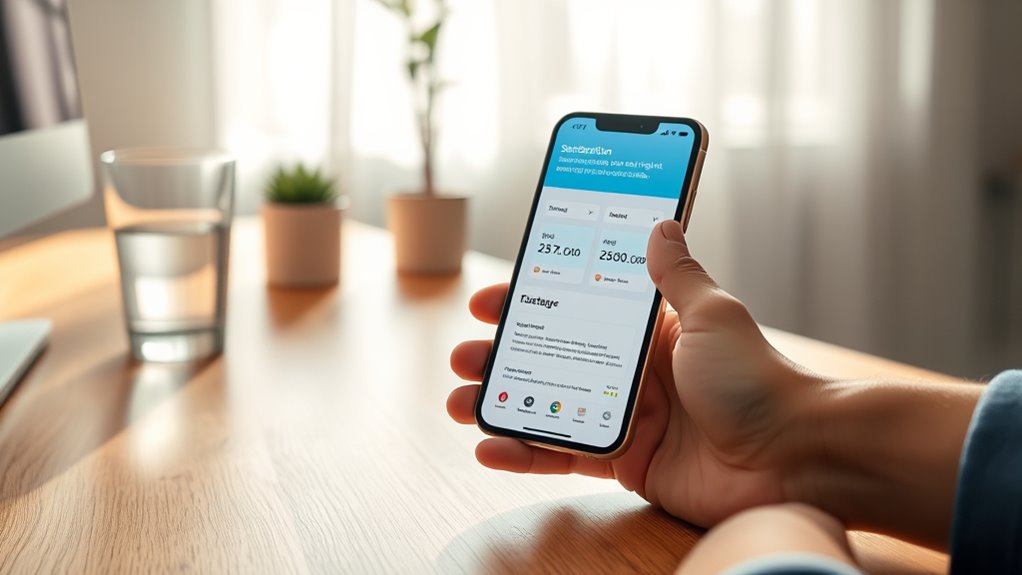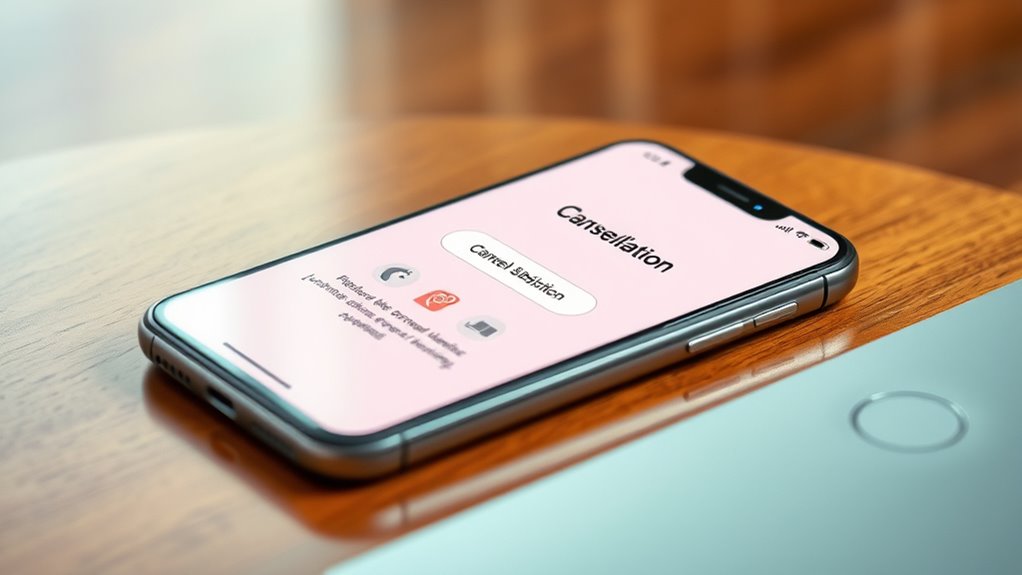To keep users hooked honestly, focus on building transparency and clarity in your service design. Make pricing simple, upfront, and easy to compare, so users trust your offering. Communicate regularly and personalize messages to show value and foster loyalty. Simplify cancellation and listen to feedback to reduce overload. By aligning honesty with user needs, you’ll create a sustainable relationship. Explore ways to improve your approach further as you discover more strategies and insights.
Key Takeaways
- Simplify cancellation processes with clear, accessible steps to reduce frustration and foster trust.
- Communicate transparently about pricing, renewal terms, and service changes to build long-term confidence.
- Regularly educate users on features and benefits through personalized, visual content to enhance perceived value.
- Monitor overload signs and tailor subscription options to prevent fatigue and keep engagement manageable.
- Maintain consistent, honest messaging across all touchpoints to reinforce reliability and strengthen user loyalty.
Understanding the Roots of Subscription Fatigue

Have you ever wondered why so many people feel overwhelmed by the number of subscriptions they manage? It’s often due to subscription overload, where too many services compete for their attention and finances. This overload causes frustration, making users feel disconnected or even annoyed with their choices. When customers feel overwhelmed, customer retention drops because they’re less likely to stick with services that seem unnecessary or confusing. Companies that don’t recognize these signs risk losing users to competitors. Understanding the roots of subscription fatigue means acknowledging that too many options, hidden costs, or complicated cancellation processes contribute to burnout. Recognizing the importance of user experience can help prevent fatigue and foster loyalty. By identifying these pain points, you can design services that reduce overload and build stronger, longer-lasting customer relationships.
Prioritizing Transparency in Service Offerings

Transparency in service offerings is essential to reducing subscription fatigue, as it helps customers make informed decisions and trust your brand. Prioritizing pricing transparency ensures users understand exactly what they’re paying for without hidden fees or surprises. Service clarity means clearly outlining what’s included in each plan, how billing works, and any additional costs. When you communicate openly, customers feel more confident in their choices, reducing frustration and churn. Being transparent also builds long-term trust, encouraging loyalty even amid market saturation. Use straightforward language and visible information to help users navigate your offerings effortlessly. By emphasizing transparency, you demonstrate honesty and respect for your customers, making it easier for them to stay engaged and avoid the fatigue caused by unclear or confusing service structures. Cookies and privacy policies play a crucial role in building trust by informing users about data collection and usage practices.
Designing Clear and Honest Pricing Models

Creating clear and honest pricing models is essential for reducing subscription fatigue because it guarantees customers understand exactly what they’re paying for without surprises. Prioritizing pricing transparency helps prevent confusion and builds trust, making users feel confident in their decisions. Be upfront about costs, including any additional fees or renewal charges, and avoid hidden charges that could erode trust over time. Use simple language and straightforward options so customers can easily compare plans and select what suits them best. Honest communication about pricing demonstrates respect for your users, fostering loyalty and reducing cancellations. Additionally, understanding the impact of legislative changes, such as debt forgiveness bills, can influence how you structure your pricing to remain compliant and transparent. Ultimately, transparent pricing models support a positive user experience, ensuring subscribers feel informed and valued, which keeps them engaged without feeling overwhelmed or misled.
Building Trust Through Consistent Communication

Clear and honest pricing models lay a strong foundation for building trust, but maintaining that trust requires ongoing, consistent communication. You should implement personalized messaging that resonates with each user’s preferences and history, making interactions feel genuine and attentive. Regular updates, transparent progress reports, and proactive check-ins become trust-building rituals that show you value your subscribers. When you communicate consistently, you reduce uncertainty and reinforce your commitment to honesty. Use clear language and avoid jargon to make sure your messages are understood. Over time, these habits foster a sense of reliability and openness. Incorporating refrigeration cycle principles into your communication strategies can also help you understand and address user concerns more effectively. By aligning your communication style with your users’ expectations, you strengthen their confidence in your service, helping to prevent subscription fatigue and encouraging long-term loyalty.
Offering Flexible Subscription Options

Offering flexible billing and tiered memberships caters to diverse user needs and preferences. When you provide flexible billing, users can choose payment cycles that suit their financial situation, reducing frustration and churn. Tiered memberships allow you to segment your audience, giving them options like basic, premium, or family plans, increasing the likelihood of retention. This flexibility shows you’re attentive to individual circumstances, making users feel valued rather than boxed into rigid packages. By designing adaptable subscription options, you empower users to select plans that align with their usage and budget, fostering satisfaction and loyalty. Additionally, user-centric design ensures that subscription models are tailored to meet evolving customer needs, further enhancing engagement and retention. Ultimately, offering flexible choices keeps users engaged and less likely to seek alternatives.
Creating Value-Driven Engagement Strategies

To combat subscription fatigue, you need to focus on delivering genuine value that keeps users engaged and motivated to stay. Personalization strategies play a pivotal role here—by tailoring content, offers, and experiences to individual preferences, you show users you understand their needs. This creates a sense of relevance and connection, encouraging continued engagement. Additionally, fostering community engagement helps build loyalty; when users feel part of a community, they’re more likely to stick around. Incorporate features that promote interaction, such as forums or user groups, to strengthen this sense of belonging. By combining personalization with community-driven initiatives, you create a more meaningful experience that not only retains users but also keeps them genuinely invested in your service. Emphasizing user engagement, which involves active participation and interaction, can significantly enhance the overall effectiveness of your retention strategies.
Listening and Responding to User Feedback

How can you truly understand your users’ needs and preferences? The key is establishing effective feedback loops that encourage honest communication. Regularly collecting user insights allows you to detect patterns, identify pain points, and gauge satisfaction levels. Responding promptly shows you value their input and are committed to improvement. This continuous cycle of listening and acting helps you adapt your service to evolving expectations, reducing subscription fatigue. Use surveys, reviews, and direct outreach to gather diverse perspectives. When you implement changes based on user feedback, communicate these updates clearly. This transparency reinforces trust and engagement, making users feel heard and appreciated. Incorporating user insights into your service design ensures that improvements align with actual needs, fostering loyalty and satisfaction. Ultimately, responsive listening creates a more personalized experience that keeps users hooked without feeling overwhelmed.
Simplifying the Cancellation Process

When customers want to cancel, make the process straightforward with a clear path to follow. Reducing effort barriers guarantees they can complete cancellations quickly without frustration. A simple, transparent process builds trust and respects their time. Incorporating familiar butter-making techniques, such as using clear instructions and consistent steps, can improve user experience during cancellations.
Clear Cancellation Path
A confusing or hidden cancellation process can substantially increase subscription fatigue, leaving you frustrated and more likely to abandon the service altogether. When users struggle to find how to cancel, they feel trapped and distrustful, which damages your relationship. To prevent this, make cancellation options clear and straightforward. Clearly communicate the cancellation process without hiding it behind multiple screens or confusing jargon. Also, guarantee billing transparency by providing detailed, accessible information about subscription renewal dates and charges. When users understand exactly what they’re signing up for and how to end their subscription, they feel more in control. This builds trust and reduces frustration, even if they choose to cancel. A transparent, easy cancellation process is key to maintaining a positive user experience and avoiding negative perceptions. Additionally, implementing user consent management ensures users are aware of their choices regarding cookies and data, fostering transparency and trust.
Minimize Effort Barriers
Simplifying the cancellation process removes unnecessary obstacles that can frustrate users and increase subscription overload. When you make it easy to cancel, you reduce effort barriers that often lead to subscription fatigue. Users shouldn’t feel trapped or overwhelmed by complicated steps, which can make them want to quit altogether. Effort reduction shows you respect their time and choices, fostering trust. By streamlining cancellation, you prevent frustration and demonstrate transparency. This not only helps retain goodwill but also encourages users to return in the future. Remember, a straightforward process reduces the risk of negative perceptions, making your service more user-friendly. Additionally, understanding the importance of creating a welcoming environment in your service design can further enhance user satisfaction. Ultimately, minimizing effort barriers supports healthier subscription habits and keeps users engaged without feeling overwhelmed.
Educating Users About Service Benefits

You need to communicate your service benefits clearly so users understand their value. Regularly showing how your service improves their experience keeps engagement high. Providing simple usage guides makes it easier for users to get the most out of your offering.
Clear Benefit Communication
Clearly communicating the benefits of a subscription service helps you understand its true value and encourages ongoing engagement. Use visual storytelling to showcase how your service solves problems or improves daily life, making benefits tangible and memorable. Consistent messaging across all touchpoints reinforces your brand’s story, building trust and familiarity. When your visuals and language align, users instantly recognize your value proposition. Avoid jargon; instead, focus on clear, straightforward explanations that highlight key advantages. By emphasizing the benefits visually and maintaining brand consistency, you make it easier for users to grasp why they should stay subscribed. This transparency reduces confusion and builds confidence, ultimately fostering long-term loyalty and reducing subscription fatigue.
Demonstrating Value Regularly
Regularly demonstrating the value of your service keeps users engaged and reinforces their decision to stay subscribed. Use personalization strategies to tailor content and offers, showing users how your service meets their unique needs. Highlight new features or benefits that align with their usage patterns, making the experience feel relevant and valuable. Loyalty programs are also effective; rewarding users for continued engagement encourages them to see ongoing benefits. Consistent communication about how your service evolves and adapts keeps users informed and invested. By actively educating users on the benefits they’re receiving, you foster trust and reduce subscription fatigue. Ultimately, demonstrating value regularly turns a passive subscription into an active, appreciated relationship.
Simplified Usage Guides
While demonstrating value keeps users engaged, ensuring they understand how to make the most of your service enhances that engagement. Simplified usage guides play a vital role in effective user onboarding by breaking down complex features into clear, easy-to-follow instructions. Incorporate feature tutorials that highlight key benefits, helping users see immediate value and reducing frustration. Use visuals, concise language, and step-by-step guidance to streamline the learning process. This approach minimizes confusion and builds confidence, encouraging continued use. When users quickly grasp how to navigate your service, they’re more likely to stay engaged and less likely to experience fatigue. Clear, accessible usage guides turn onboarding into a positive experience, reinforcing the benefits and fostering long-term loyalty.
Measuring and Adjusting for Long-Term Loyalty

To effectively measure and adjust for long-term loyalty, you need to track specific metrics that go beyond initial sign-ups or short-term engagement. Focus on loyalty metrics like repeat purchase rates, customer lifetime value, and engagement consistency over months or years. These indicators reveal whether users remain committed and find ongoing value in your service. Additionally, evaluate the effectiveness of retention incentives, such as personalized rewards or exclusive content, in encouraging sustained loyalty. Regularly reviewing these metrics helps you identify patterns and gaps, allowing you to refine your strategies. By understanding what keeps users engaged long-term, you can tailor your service design to foster genuine loyalty and combat subscription fatigue. This proactive approach ensures your users stay hooked honestly, for the long haul.
Frequently Asked Questions
How Can Service Design Prevent Subscription Fatigue Before It Starts?
To prevent subscription fatigue, focus on thoughtful customer onboarding that clearly explains benefits without overwhelming users. Incorporate feature pacing to introduce new features gradually, avoiding information overload. Regularly gather user feedback to adjust content and offerings accordingly. By making onboarding smooth and pacing features well, you keep users engaged and satisfied, reducing the risk of fatigue before it even begins. This proactive approach helps maintain long-term loyalty and subscription retention.
What Role Does Personalization Play in Retaining Subscribers Long-Term?
Your subscription experience can become legendary with personalization. Personalization plays a pivotal role in retaining subscribers long-term by delivering tailored content that truly matches their interests. Personalized notifications remind users of relevant updates, making them feel valued. When you focus on these strategies, you create an engaging environment where users stay connected and loyal, reducing the risk of subscription fatigue. Embracing personalization turns routine subscriptions into indispensable parts of their lives.
How Can Companies Balance Upselling Without Overwhelming Users?
You can balance upselling by being transparent about pricing and avoiding pushy tactics. Clearly communicate the value of additional offerings and consider loyalty programs that reward continued subscriptions. This way, you maintain trust and avoid overwhelming users, making upselling feel like a benefit rather than a burden. Focus on personalized suggestions that match their preferences, ensuring they see the added value without feeling pressured or confused.
What Are the Ethical Considerations in Designing Engagement Strategies?
Thinking of engagement strategies as a tightrope walk, you must balance user interest with ethics. You need to prioritize privacy concerns and guarantee informed consent, so users feel respected rather than manipulated. By being transparent and honest about data use and engagement tactics, you build trust and avoid crossing ethical lines. Ultimately, designing responsibly keeps your relationship with users healthy and genuine, not just a quick thrill on the wire.
How Can User Data Be Ethically Used to Improve Subscription Experiences?
You can ethically use user data by prioritizing data privacy and ensuring clear user consent. Always inform users about how their data will be used to improve their subscription experience. Collect only necessary data, and give users control over what they share. By maintaining transparency and respecting privacy, you build trust and create personalized experiences that keep users engaged without compromising their rights.
Conclusion
To keep your users truly hooked, you must nurture trust like a delicate garden, tending it with transparency and honesty. Clear pricing and simple choices act as the sturdy roots, while consistent communication and flexibility help your service flourish. Listen deeply to your users’ voices—like gentle rain nourishing growth. When you prioritize genuine connection and remove obstacles, loyalty blooms naturally, transforming fleeting interest into lasting devotion. Cultivate these habits and watch your service thrive beyond subscription fatigue.









